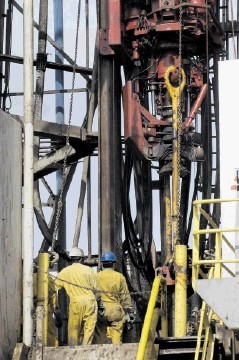
Petrofac’s Engineering & Consulting Services business (ECS), in partnership with Doris Engineering of Houston (Doris), has been awarded a project management contract by Mexico’s state operator Pemex.
The arrangement covers specialised technical assistance and supervision for the construction, installation, commissioning, testing and start-up of deep-water subsea wells and infrastructure for the seven-well subsea-to-shore Lakach project.
The scope will also involve drilling activities and tie-ins to existing onshore facilities. Initially involving around 25 engineers, based in Mexico and Houston, the project is scheduled to complete towards the end of 2015.
Craig Muir, MD at ECS, which employs some 350 specialist engineers in Woking, Surrey, said of the win: “I am delighted that Petrofac’s Engineering & Consulting Services business has been selected to support such a significant project for Pemex with this its first major deepwater development.
“Pemex will benefit from the full breadth of Petrofac’s specialist subsea pipeline consulting and engineering services in addition to our well management capabilities. We look forward to working closely on this significant project and further building Petrofac’s presence in Mexico.”
Lakach is located offshore Veracruz within the Coatzacoalcos Profundo, which is a huge new deepwater resource now being opened up by Pemex, which launched its deepwater programme roughly a decade ago.
Drilling started in 2005 and quickly led to the Noxal and Lakach finds, since when a significant number of other discoveries have been made.
The first find, Noxal, was made in December that year in 935m (3,068ft) of water.
The $50million well was drilled to a total depth of 3,963m using the Diamond Offshore rig Ocean Worker, which targeted both Middle Miocene and Lower Miocene formations.
Testing at four intervals on Noxal-1 resulted in gas flows of up to 10million cu.ft per day, with reserves initially estimated at 245billion cu.ft.
3P reserves at Noxal-1 are estimated at 420.2billion cu.ft of gas and 80.8million barrels of oil.
The success at Noxal-1 led Pemex to confirm that the Coatzacoalcos Profundo area contained 10billion barrels oil equivalent.
Following the Noxal-1 success, Pemex embarked on Lakach-1, which remains the deepest well attempted by the company to date.
The water depth at the Lakach-1 location is 988m. This discovery ranks as the fourth-largest gas field discovered in Mexico. Lakach is estimated to hold 1.3trillion cu.ft of gas reserves (3P figure).
Over the period 2005-12, the following wells were drilled:
o Noxal-1 (935m / 3,067ft)
o Lakach-1 (988m / 3,241ft)
o Lalail-1 (805m / 2,640ft)
o Chelem-1 (810m / 2,657ft)
o Tamil (680m / 2,230ft)
o Tamha-1 (1,121m / 3,677ft)
o Etbakel (687m / 2,253ft)
o Leek-1 (848m / 2,781ft)
o Holok 1 (1,015m / 3,329ft)
o Kabilil-1 (740m / 2,427ft)
o Labay-1 (1,698m / 5,569ft)
o Lakach-2DL (1,199m / 3,933ft )
o Piklis-1 (1,945m / 6,380ft)
o Nen-1 (1,515m / 4,969ft)
o Hux-1 (1186m / 3890ft)
o Kunah-1 (2147m / 7042ft)
o Yoka-1
o Piklis-1DL
Pemex presented on its offshore ambitions to members of Subsea UK projects in February 2011 in a bid to capture North Sea supply chain interest.
Two wells were scheduled to be drilled in Coatzacoalcos in 2007 but did not go ahead.
Lakach development plans include additional drilling and construction of offshore infrastructure to bring the gas to shore. First production is not expected before 2014.
A critical reason why Petrofac has been brought in despite Mexico’s local content rules is because Pemex has had no experience with deepwater drilling and development and so needs considerable help to successfully establish domestic deepwater production.
Output from existing on- and offshore resources has plummeted in recent years, with resource nationalisation blamed for the fall-off.